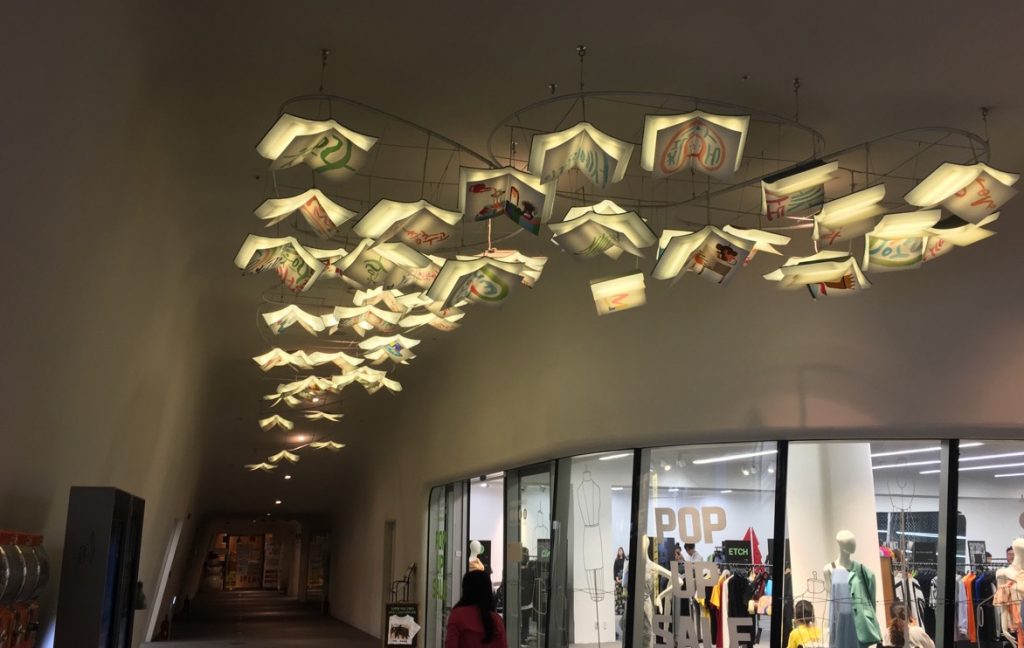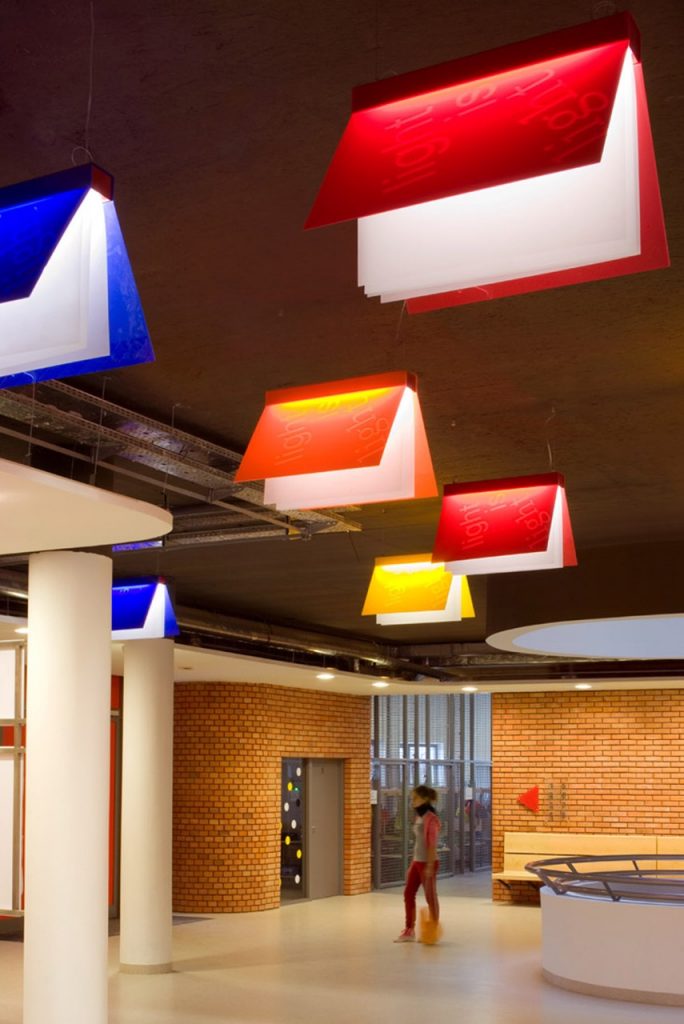What is good lighting for the best feng shui for your home and workplace?
Light is key to life and good lighting is essential for optimum feng shui for homes and workplaces. The lighting technology has changed dramatically with the invention of LED lights which is now a dominant type for homes and workplaces. At the same time, the dangers of LED lighting have been highlighted by recent research. It’s time-consuming to keep well informed and abreast of all the different viewpoints out there as new LED technologies develop.
So what kind of lighting is good for feng shui?

Zaha Hadid – books lamps Seoul
Full spectrum lighting
The term “full spectrum lighting” this term refers to a balance of colour temperature within a light source which tries to simulate daylight. All light sources are made up from the full-colour spectrum just with varying degrees of a number of colours which make up the colour spectrum. The simplest way to see the colour spectrum is to use a crystal from a chandelier holding it up to sunlight, as the sunlight passes through the crystal the light bends opening up showing the colour spectrum which results with a rainbow effect on a surface, usually we notice this on a wall in the room.
Melatonin production is linked to cellular repair, memory consolidation and information processing during the night. Melatonin production is affected by
1) light and
2) electro-smog.
So sleep in total darkness and switch off your wifi for the night.
If you’re choosing LED – choose a full spectrum LED lighting with CRI values greater than 90
LED
High CRI (Colour Rendering Index) 90+ CRI LED Lighting
It’s highly recommended to choose a full spectrum LED lighting with CRI values greater than 90. This means the colour accuracy and reproduction of these LEDs is nearly perfect making them an excellent choice for homes and workplaces as well as retail, art galleries, museums, and so on.
What is the colour rendering index (CRI)?
CRI is a measure of a light source’s ability to show object colours “realistically” or “naturally” compared to a familiar reference source, either incandescent light or daylight. CRI is calculated from the differences in the chromaticities of eight CIE standard colour samples (CIE 1995) when illuminated by a light source and by a reference illuminant of the same correlated colour temperature (CCT); the smaller the average difference in chromaticities, the higher the CRI. A CRI of 100 represents the maximum value. Lower CRI values indicate that some colours may appear unnatural when illuminated by the lamp. Incandescent lamps have a CRI above 95. Cool white fluorescent lamps have a CRI of 62, however fluorescent lamps containing rare-earth phosphors are available with CRI values of 80 and above.
Lighting for reading
Dr Alexander Wunsch says “If you have to read in the evening or at night time, my personal favourite light source for reading tasks is a low-voltage incandescent halogen lamp, which is operated on a DC transformer. Direct current will eliminate all the dirty electricity and it will eliminate all the flicker. There are transformers available where you can adjust the output between 6 volts and 12 volts. As long as it’s direct current, there is no flicker, there is no dirty electricity, and you are able to dim the halogen lamp into a colour temperature which is comparable to candlelight even. This is the softest, the healthiest electric light you can get at the moment.”
Light and creativity
A 2013 study done by psychologists at the University of Stuttgart and Hohenheim in Germany found that dim lighting can improve creativity. Researchers suggest that “Darkness creates a feeling of freedom, triggering a risky exploratory processing style”.
More info: LED lighting
What is good lighting for the best feng shui for your home and workplace?
Why LED lighting is dangerous to your health and not good feng shui?

